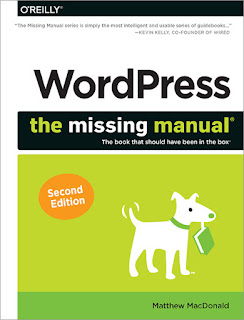WordPress: The Missing Manua 2nd Edition
Download
Introduction
Throughout history, people have searched for new places to vent their opinions,
sell their products, and just chat it up. The World Wide Web is the culmination
of this trend—the best and biggest soapbox, marketplace, and meeting spot
ever created.
But there’s a problem. If you want people to take your website seriously, you need
first-rate content, a dash of good style, and the behind-the-scenes technology that
ties everything together. The first two items require some hard work. But the third
element—the industrial-strength web plumbing that powers a good site—is a lot
trickier to build on your own. Overlook that, and you’ve got a broken mess of pages
that even your mom can’t love.
This is where the ridiculously popular web publishing tool called WordPress comes
in. WordPress makes you a basic deal: You write the content, and WordPress takes
care of the rest.
The services that WordPress provides are no small potatoes. First, WordPress puts
every page of your content into a nicely formatted, consistent layout. It provides the
links and menus that help your visitors get around, and a search box that lets people
dig through your archives. WordPress also lets your readers add comments using
their Facebook or Twitter identities, so they don’t need to create a new account on
your site. And if you add a few community-created plug-ins (from the vast library of
more than 30,000), there’s no limit to the challenges you can tackle. Selling products?
Check. Setting up a membership site? No problem. Building forums and collaborative
workspaces? There’s a plug-in for that, too. And while it’s true that WordPress isn’t
the best tool for every type of website, it’s also true that wherever you find a gap
in the WordPress framework, you’ll find some sort of plug-in that attempts to fill it.
WordPress is stunningly popular, too—it’s responsible for more than one-fifth of
the world’s websites, according to the web statistics company W3Techs. It’s 10 times more popular than its closest competitors, sitebuilding
tools like Joomla and Drupal. And month after month, WordPress’s share of
the Web continues to inch upward. In short, when you create your own WordPress
site, you’ll be in good company
About the Outline
This book is divided into five parts, each with several chapters:
Part 1, Starting Out with WordPress. In this part of the book, you’ll start planning
your path to WordPress web domination. In Chapter 1, you’ll plan the type
of website you want, decide how to host it, and think hard about its domain
name, the unique address that visitors type in to find your site on the Web.
Then you’ll see how to get a basic blog up and running, either on WordPress.
com (Chapter 2) or on your self-hosted site (Chapter 3).
Part 2, Building a WordPress Blog. This part explains everything you need to
know to create a respectable blog. You’ll learn how to add posts (Chapter 4),
pick a stylish theme (Chapter 5), make your posts look fancy (Chapter 6), add
pages and menus (Chapter 7), and manage comments (Chapter 8).
Part 3, Supercharging Your Blog. If all you want is a simple, classy blog, you
can stop now—your job is done. But if you hope to add more glam to your site,
this part will help you out. First, you’ll learn that plug-ins can add thousands of
new features to self-hosted sites (Chapter 9). Next, you’ll see how to put video,
music, and photo galleries on any WordPress site (Chapter 10). You’ll also learn
how to collaborate with a whole group of authors (Chapter 11), and how to attract
boatloads of visitors (Chapter 12).
Part 4, From Blog to Website. In this part, you’ll take your WordPress skills
beyond the blog and learn to craft a custom website. First, you’ll crack open
a WordPress theme and learn to change the way your site works by adding,
inserting, or modifying the CSS styles and PHP commands embedded inside the
theme (Chapter 13). Next, in Chapter 14, you’ll apply this knowledge to create a
WordPress product-catalog site that doesn’t look anything like a typical blog.
Part 5, Appendixes. At the end of this book, you’ll find three appendixes. The
first (Appendix A: “Migrating from WordPress.com”) explains how to take a
website you created on the free WordPress.com hosting service and move it
to another web host to get more features. The second (Appendix B: “Securing
a Self-Hosted Site”) explains the security basics you need to harden your site
against attackers. The third (Appendix C: “Useful Websites”) lists some useful
web links culled from the chapters in this book
Home Web Development WordPress: The Missing Manua 2nd Edition

